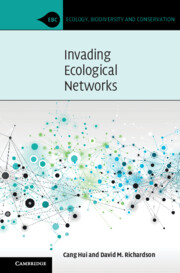82 results
Subcutaneous administration of drugs and hydration in acute palliative care units: Physician attitudes and beliefs in the United States and Canada
-
- Journal:
- Palliative & Supportive Care , First View
- Published online by Cambridge University Press:
- 21 December 2023, pp. 1-4
-
- Article
- Export citation
Analysis of high-speed drop impact onto deep liquid pool
-
- Journal:
- Journal of Fluid Mechanics / Volume 972 / 10 October 2023
- Published online by Cambridge University Press:
- 04 October 2023, A31
-
- Article
-
- You have access
- Open access
- HTML
- Export citation
Pair-wise comparisons of multiple models
-
- Journal:
- Judgment and Decision Making / Volume 6 / Issue 8 / December 2011
- Published online by Cambridge University Press:
- 01 January 2023, pp. 821-831
-
- Article
-
- You have access
- Open access
- HTML
- Export citation
The role of achievement attribution in the associations between parent–child communication and psychological well-being among adolescents: A mediation analysis
-
- Journal:
- European Psychiatry / Volume 65 / Issue 1 / 2022
- Published online by Cambridge University Press:
- 31 August 2022, e52
-
- Article
-
- You have access
- Open access
- HTML
- Export citation
Is spiritual well-being related to survival time of inpatients with advanced cancer? An East Asian cohort study
-
- Journal:
- Palliative & Supportive Care / Volume 21 / Issue 3 / June 2023
- Published online by Cambridge University Press:
- 27 June 2022, pp. 483-491
-
- Article
- Export citation
6 - Network Scaling
-
- Book:
- Invading Ecological Networks
- Published online:
- 05 May 2022
- Print publication:
- 13 January 2022, pp 318-369
-
- Chapter
- Export citation
1 - Invasion Science 1.0
-
- Book:
- Invading Ecological Networks
- Published online:
- 05 May 2022
- Print publication:
- 13 January 2022, pp 1-49
-
- Chapter
- Export citation
Acknowledgements
-
- Book:
- Invading Ecological Networks
- Published online:
- 05 May 2022
- Print publication:
- 13 January 2022, pp xvii-xviii
-
- Chapter
- Export citation
Glossary
-
- Book:
- Invading Ecological Networks
- Published online:
- 05 May 2022
- Print publication:
- 13 January 2022, pp 405-418
-
- Chapter
- Export citation
Preface
-
- Book:
- Invading Ecological Networks
- Published online:
- 05 May 2022
- Print publication:
- 13 January 2022, pp xi-xvi
-
- Chapter
- Export citation
3 - Network Assembly
-
- Book:
- Invading Ecological Networks
- Published online:
- 05 May 2022
- Print publication:
- 13 January 2022, pp 109-204
-
- Chapter
- Export citation
4 - Regimes and Panarchy
-
- Book:
- Invading Ecological Networks
- Published online:
- 05 May 2022
- Print publication:
- 13 January 2022, pp 205-264
-
- Chapter
- Export citation
Contents
-
- Book:
- Invading Ecological Networks
- Published online:
- 05 May 2022
- Print publication:
- 13 January 2022, pp ix-x
-
- Chapter
- Export citation
Plate Section (PDF Only)
-
- Book:
- Invading Ecological Networks
- Published online:
- 05 May 2022
- Print publication:
- 13 January 2022, pp 425-436
-
- Chapter
- Export citation
Copyright page
-
- Book:
- Invading Ecological Networks
- Published online:
- 05 May 2022
- Print publication:
- 13 January 2022, pp vi-vi
-
- Chapter
- Export citation
5 - Network Transitions
-
- Book:
- Invading Ecological Networks
- Published online:
- 05 May 2022
- Print publication:
- 13 January 2022, pp 265-317
-
- Chapter
- Export citation
Epigraph
-
- Book:
- Invading Ecological Networks
- Published online:
- 05 May 2022
- Print publication:
- 13 January 2022, pp vii-viii
-
- Chapter
- Export citation
Index
-
- Book:
- Invading Ecological Networks
- Published online:
- 05 May 2022
- Print publication:
- 13 January 2022, pp 419-424
-
- Chapter
- Export citation

Invading Ecological Networks
-
- Published online:
- 05 May 2022
- Print publication:
- 13 January 2022
2 - Relentless Evolution
-
- Book:
- Invading Ecological Networks
- Published online:
- 05 May 2022
- Print publication:
- 13 January 2022, pp 50-108
-
- Chapter
- Export citation



